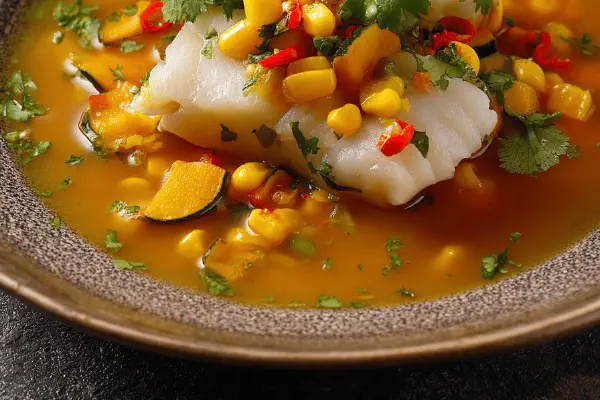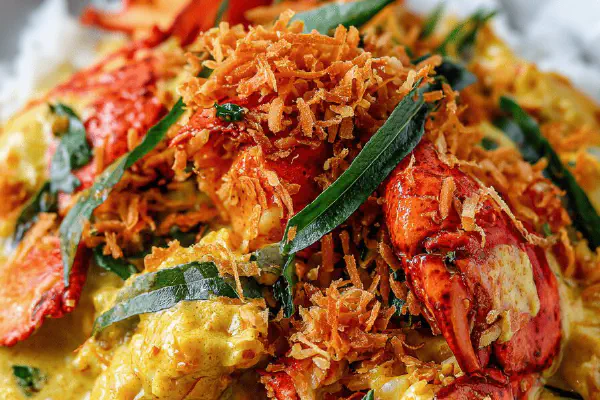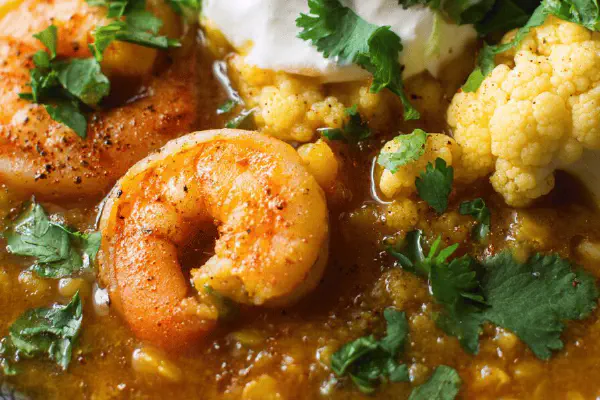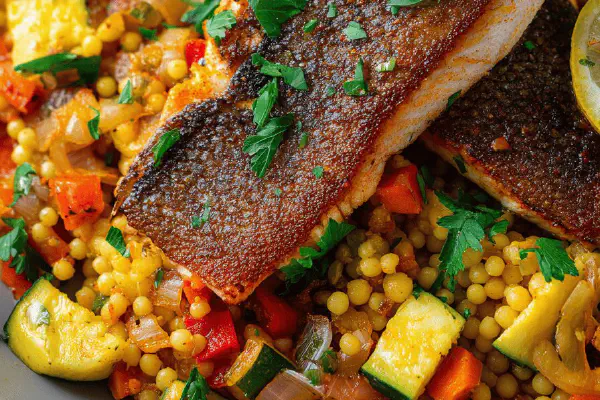Featured Recipe
Indian-Spiced Fish Curry
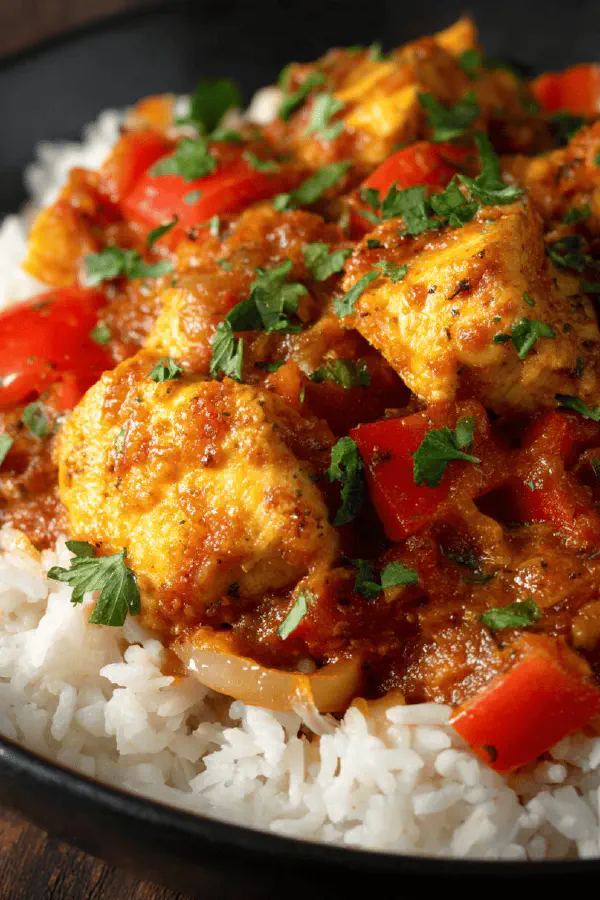
By Kate
"
Chunks of firm white fish seared, simmered in a spiced tomato-based sauce with bell peppers. Uses garam masala and cayenne for heat and warmth. Onion and garlic base, deglazed with vegetable broth for a lighter touch. No dairy, nuts, eggs, or gluten involved. Served best over fragrant basmati rice.
"
Prep:
20 min
Cook:
20 min
Total:
40 min
Serves:
4 servings
curry
Indian cuisine
seafood
healthy meals
Introduction
Fish chunks tossed in a punchy, warmly spiced sauce. No cream, no fuss. Onion and garlic soften first, building simple base flavors. Tomato paste thickens and brightens. Garam masala spices with deep aromatic notes; smoked paprika swaps usual cayenne for smoky depth. Sautéed bell pepper adds sweetness, color, texture contrast. Broth lightens the sauce, prevents sticking and adds subtle savoriness. Quick pan sear locks in moisture on fish. Final mingle in sauce for combined taste. Get rice ready before you start. No gluten, no dairy, no nuts, avoiding common allergens. Simple yet layered; a home kitchen curry twist.
Ingredients
About the ingredients
Onions add mild sweetness, cut fine for quick softening. Olive oil chosen for neutral flavor and suitable cooking point. Increase garlic for more pungency or reduce if desired. Tomato paste concentrates tomato flavor without making red sauce soupy. Garam masala lends essential Indian flavor, but blend brands vary – taste and adjust quantity accordingly. Smoked paprika replaces usual cayenne to reduce heat, add smoke – can swap with regular paprika or chili powder if preferred. Vegetable broth keeps things plant-based and lighter compared to chicken stock. Bell pepper julienned to ensure quick cooking and better texture contrast to fish. Firm white fish like cod or halibut holds shape better than flaky varieties. Salt and pepper essential; season early and adjust later.
Method
Technique Tips
Cooking onions low and slow first pulls out sweetness, softening texture. Garlic and spices added later prevent burning, unlocking aromas, should be stirred constantly. Deglazing with broth not just for moisture but to scrape up tasty fond bits from pan. Simmer sauce gently to meld flavors without breaking down tomato paste too much. High heat needed to sauté bell peppers quickly, preserving some bite and flavor. Fish should be dry before searing, cooked quickly on each side to prevent tough texture—don’t move too much to get nice sear. Combining fish with sauce off heat or low avoids overcooking delicate flesh. Taste-test seasoning near the end to correct salt, adjust spice as needed. Serve piping hot. Basmati makes perfect base – fragrant, light grains contrast sauce beautifully.
Chef's Notes
- 💡 Chop onions small. This helps them soften fast. Sweetness comes out. Cook low heat at first. Allow time to get it right. Garlic later to avoid burning.
- 💡 Use extra virgin olive oil when cooking. Good for flavor and high heat. Always check oil temperature for sautéing vegetables. Hot skillet is key.
- 💡 Fish should be dry before searing. Pat it down with a paper towel. Helps achieve a good sear. Don’t crowd. Cook in batches if needed.
- 💡 Taste as you go. Adjust salt and spices near end. Garam masala varies in strength between brands. Find the balance for your palate.
- 💡 Serve quickly. Over basmati rice or flatbread. Both absorb sauce well. Keep warm while enjoying the dish for best texture and flavor.
Kitchen Wisdom
Best fish for curry
Firm white fish like cod or halibut. They hold shape. Flaky fish falls apart. Not ideal for this dish.
Can I use another spice?
Yes, use regular paprika instead. Or chili powder if smoke not preferred. Taste at each stage to get it right.
What if I overcook the fish?
Fish becomes tough and dry. Keep cooking time short. Watch it closely for a tender texture.
How to store leftovers?
Keep in airtight container. Refrigerate for up to 3 days. Reheat gently on low heat to retain moisture.
